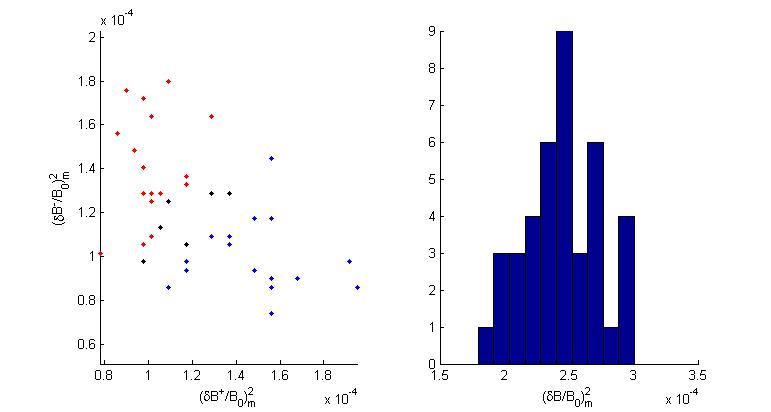I did 40 runs of the sulfur test case (same input params as 01/17/06), each time using a different seed for the random number generator. 17 of the runs showed the positive helicity modes clearly grew to higher saturation amplitudes, 17 of the runs showed the negative helicity modes to clearly dominate and 6 runs showed the modes approximately equal. So, the net results is that there is a 50/50 chance of seeing either the negative or positive mode dominate.
However, the maximum energy of the total fluctuating magnetic field varied between the runs. For a 1700 nT background field, the range of fluctuating field amplitudes seen is between 23-29 nT; the mean is 26 nT with 1.5 nT standard deviation.
The figures show (left) the saturation energy for the positive vs. negative helicity modes and (right) histogram of total field energy.
LEFT: blue = positive helicity modes dominate; red = negative helicity modes dominate; black = modes about even
